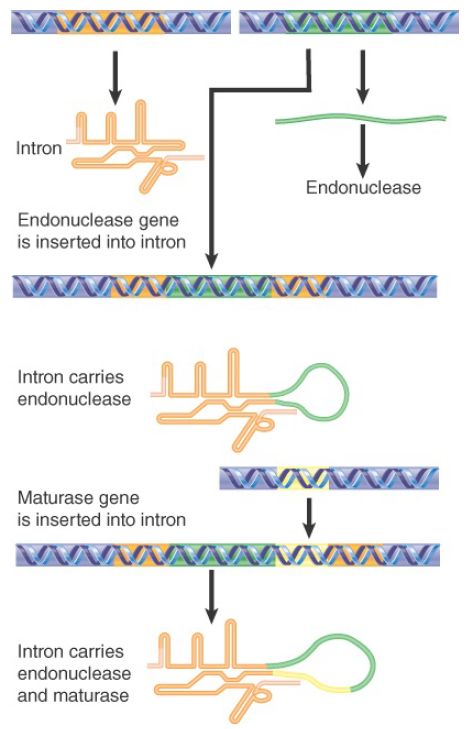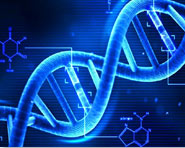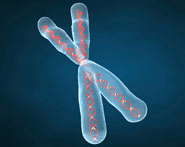


 النبات
النبات
 الحيوان
الحيوان
 الأحياء المجهرية
الأحياء المجهرية
 علم الأمراض
علم الأمراض
 التقانة الإحيائية
التقانة الإحيائية
 التقنية الحيوية المكروبية
التقنية الحيوية المكروبية
 التقنية الحياتية النانوية
التقنية الحياتية النانوية
 علم الأجنة
علم الأجنة
 الأحياء الجزيئي
الأحياء الجزيئي
 علم وظائف الأعضاء
علم وظائف الأعضاء
 الغدد
الغدد
 المضادات الحيوية
المضادات الحيوية|
Read More
Date: 1-6-2021
Date: 3-1-2016
Date: 29-12-2015
|
Some Autosplicing Introns Require Maturases
Key concept
- Autosplicing introns may require maturase activities encoded within the intron to assist folding into the active catalytic structure.
Although group I and group II introns both have the capacity to autosplice in vitro, under physiological conditions they usually require assistance from proteins. In some examples of group I and group II splicing, the intron itself may encode maturase activities that are required to assist the splicing reaction. The maturase activity is part of the single open reading frame encoded by the intron. In the example of introns that encode homing endonucleases, the single protein product has both endonuclease and maturase activity. Mutational analysis shows that the two activities are independent. Structural analysis confirms the mutational data and shows that the endonuclease and maturase activities are provided by different active sites in the protein, each encoded by a separate domain. The coexistence of endonuclease and maturase activities in the same protein suggests a route for the evolution of the intron. FIGURE 1 suggests that the intron originated in an independent autosplicing element. Although Figure 1 depicts a group I intron, the process for group II introns is presumed to be similar. The insertion of a sequence encoding an endonuclease into this element gave it mobility. However, the insertion might well disrupt the ability of the RNA sequence to fold into the active structure. This would create pressure for assistance from proteins that could restore folding ability. The incorporation of such a sequence into the intron would maintain its independence.

FIGURE 1. The intron originated as an independent sequence encoding a self-splicing RNA. The insertion of the endonuclease sequence created a mobile homing intron. The insertion of the maturase sequence then enhanced the ability of the intron sequences to fold into the active structure for splicing.
However, some group II introns do not encode maturase activity. These introns may use proteins (comparable to intron-encoded maturases) that are instead encoded by sequences in the host genome. This suggests a possible route for the evolution of general splicing factors. The factor may have originated as a maturase that specifically assisted the splicing of a particular intron. The coding sequence became isolated from the intron in the host genome and
then it evolved to function with a wider range of substrates than the original intron sequence. The catalytic core of the intron could have evolved into a small nuclear RNA (snRNA).



|
|
|
|
دخلت غرفة فنسيت ماذا تريد من داخلها.. خبير يفسر الحالة
|
|
|
|
|
|
|
ثورة طبية.. ابتكار أصغر جهاز لتنظيم ضربات القلب في العالم
|
|
|
|
|
|
|
أصواتٌ قرآنية واعدة .. أكثر من 80 برعماً يشارك في المحفل القرآني الرمضاني بالصحن الحيدري الشريف
|
|
|